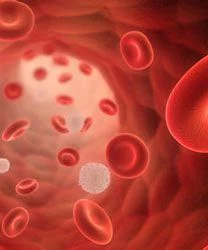Article
JSP191 With Low-Dose Irradiation and Fludarabine Shows Promise in MRD+ AML/MDS
Author(s):
February 9, 2021 - JSP191 in combination with low-dose total body irradiation and fludarabine has demonstrated efficacy and tolerability in older patients with minimal residual disease–positive acute myeloid leukemia and myelodysplastic syndrome who are undergoing nonmyeloablative allogeneic hematopoietic cell transplantation.

JSP191 in combination with low-dose total body irradiation (TBI) and fludarabine has demonstrated efficacy and tolerability in older patients with minimal residual disease (MRD)–positive acute myeloid leukemia (AML) and myelodysplastic syndrome (MDS) who are undergoing nonmyeloablative allogeneic hematopoietic cell transplantation (HCT), according to a poster presented at the 2021 Transplantation and Cellular Therapy Meetings.1
While the results of this phase 1 trial (NCT04429191) are early, the investigators emphasized that these data are the first to demonstrate that the antiCD117 monoclonal antibody is safe and effective in this disease cohort.
“We are developing a first-in-class monoclonal antibody (mAb), JSP191, which targets and depletes normal and MDS/AML disease-initiating hematopoietic stem cells,” wrote the investigators. “JSP191 acts by inhibiting stem cell factor binding to CD117 present on HSC. We and others showed in pre-clinical models that HSC depletion can be enhanced by combining anti-CD117 mAb with low dose total body radiation.”
The anti-CD117 monoclonal antibody was administered to a total of 6 patients intravenously at a dose of 0.6 mg/kg. Of note, the study population consisted of patients aged 60 years or older with MRD detected via cytogenetics, difference from normal flow cytometry, or next-generation sequencing (NGS).
The dual primary end points of the study are the safety and tolerability of JSP191 combined with low dose total body radiation and fludarabine and of JSP191 pharmacokinetics. The secondary end points include engraftment and donor chimerism, MRD clearance, event-free survival, and overall survival, among others.
The team used serum concentration of JSP191 determined by pharmacokinetics to establish the predicted JSP191 clearance and safety for the administration of fludarabine at 30 mg/m2 per day for 3 days, at days ‑4, -3, and -2 leading up to transplant.
At 28 days following transplant, 5 out of 6 patients showed signs of complete (>95%) donor CD15 myeloid chimerism in the peripheral blood.
To this point, there has been no evidence of significant infusion toxicities or JSP191-related serious adverse events. Also, a reduction or elimination of MRD in all subjects was seen at 28 days following transplant.
The research team explained that blood stem cell transplantation may offer the only curative therapy for many forms of both AML and MDS. Even though the current standard-of-care conditioning regimens administered before blood stem cell transplantation are well tolerated, they remain associated with increased relapse rates due to the prevalence of disease-causing hematopoietic stem cells and inadequate graft versus leukemia effect.
Further accrual for this study continues, while correlative analyses focusing on JPS191’s impact with disease-initiating hematopoietic stem cells are ongoing.
References
Muffly L, Kwon HS, Chin M, et al. Phase 1 study of JSP191, an anti-CD117 monoclonal antibody, with low dose irradiation and fludarabine in older adults with MRD-positive AML/MDS undergoing allogeneic HCT. Presented at the 2021 Transplantation and Cellular Therapy Meetings, held February 8-12, 2021. Abstract LBA5.









